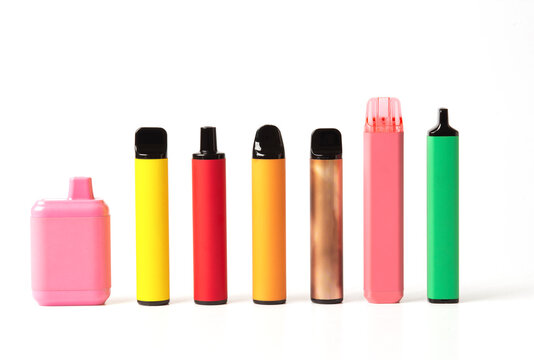
Vaping has become a global phenomenon in recent years, but its roots trace back to a much longer history of smoking alternatives. As the harmful effects of smoking became more apparent in the latter half of the 20th century, people Geek Bar Pulse X Flavors Ranked began searching for less harmful ways to enjoy nicotine. What started as simple ideas and inventions to mimic smoking has evolved into a multi-billion-dollar industry, with vaping devices ranging from beginner-friendly e-cigarettes to advanced mods and tanks. This evolution reflects not only advances in technology but also shifts in society’s approach to nicotine consumption and tobacco-related health risks.
The story of vaping begins with the rise of cigarette smoking in the 20th century. Tobacco use had become deeply ingrained in many cultures, with millions of people across the world lighting up daily. However, by the 1950s and 1960s, growing scientific evidence revealed the dangers of smoking, linking it to serious health issues like lung cancer, heart disease, and respiratory illnesses. In response to these findings, public health campaigns began warning people about the risks of tobacco use, and smoking rates started to decline, particularly in Western countries. This created an environment ripe for the development of alternative smoking products that could mimic the experience of smoking without the harmful effects of combustion.
The first true step toward what we now know as vaping came in the 1960s with the invention of the first e-cigarette prototype by Herbert A. Gilbert. His device, patented in 1963, was designed as a smokeless cigarette that heated a liquid (which he described as “flavored air”) to produce a vapor instead of smoke. However, Gilbert’s device never gained commercial traction, and the concept of vaping largely remained dormant for decades. It wasn’t until the early 2000s that the modern e-cigarette, as we know it today, began to take shape. In 2003, Chinese pharmacist Hon Lik invented the first commercially successful e-cigarette after his father died from lung cancer. Lik’s design utilized a vaporization process, where a battery-powered atomizer heated a nicotine-laced liquid to create a vapor that could be inhaled, offering a safer alternative to traditional smoking.
The early 2010s saw a rapid expansion in the popularity of e-cigarettes, thanks in part to their perceived safety compared to traditional cigarettes. E-cigarettes became an increasingly common tool for smokers looking to quit, and the market for vaping products exploded. At first, the e-cigarette was a simple, compact, disposable device, often resembling a traditional cigarette. These early e-cigarettes were designed for ease of use, with pre-filled cartridges and minimal maintenance. However, as vaping grew in popularity, so did the demand for more customizable and advanced devices. This led to the rise of vape pens and box mods, which allowed users to adjust settings like power, airflow, and nicotine strength to suit their preferences. These devices also allowed for larger e-liquid reservoirs and higher vapor production, catering to vapers who sought bigger clouds and more intense flavors.
As vaping technology evolved, so too did the social landscape surrounding it. What was initially viewed as a smoking cessation tool quickly became a subculture in its own right, with its own set of enthusiasts, advocates, and critics. The rise of vape culture in the mid-2010s led to the proliferation of vape shops, conventions, and online communities where users could share tips, tricks, and flavor recommendations. In addition to creating an entirely new hobby for many, vaping also began to be viewed as a healthier alternative to smoking, although this notion remains controversial. While vaping eliminates many of the harmful chemicals found in tobacco smoke—such as tar and carbon monoxide—health experts remain cautious, as the long-term health effects of inhaling vaporized nicotine and other chemicals are still not fully understood.
Today, the vaping industry is a global marketplace worth billions of dollars, with a diverse range of products and an ever-expanding list of e-liquid flavors. While e-cigarettes continue to be marketed as a smoking cessation tool, concerns about youth vaping and the potential risks of nicotine addiction have led to calls for stricter regulation. Governments worldwide have begun implementing policies to control the sale of e-cigarettes, particularly flavored products that are often targeted at younger audiences. At the same time, the development of nicotine salt e-liquids, pod systems, and advanced mods reflects ongoing innovation within the vaping community. As the industry continues to evolve, one thing remains clear: vaping has transformed from a niche alternative to smoking into a cultural and economic force that shows no signs of slowing down.
In conclusion, the evolution of vaping from its early, experimental roots to the sophisticated devices of today highlights the ongoing search for alternatives to smoking. What began as a simple solution to reduce the dangers of tobacco has blossomed into an industry with both potential and challenges. While e-cigarettes may offer a less harmful alternative for smokers looking to quit, it is essential to recognize the ongoing concerns about the long-term health effects and the implications for younger, non-smoking users. The journey of vaping is far from over, and its future will likely be shaped by new innovations, regulations, and an ongoing dialogue between public health experts, industry leaders, and consumers.